Themed collection Photocatalysis

Photoredox catalysts based on earth-abundant metal complexes
Visible light photoredox catalysis has exploded into the consciousness of the synthetic chemist. We critically review Earth-abundant metal complexes photocatalysts including Cu(I), Zn(II), Ni(0), V(V), Zr(IV), W(0), W(VI), Mo(0), Cr(III), Co(III) and Fe(II).
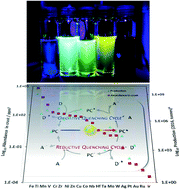
Catal. Sci. Technol., 2019,9, 889-915
https://doi.org/10.1039/C8CY02336K
Yolk–shell nanostructures: synthesis, photocatalysis and interfacial charge dynamics
This review gives a comprehensive retrospection on the preparation and photocatalytic applications of yolk–shell nanostructures with additional focus on the realization of interfacial charge dynamics.
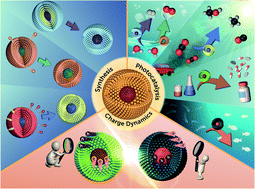
RSC Adv., 2021,11, 12288-12305
https://doi.org/10.1039/D1RA00803J
Recent progress in biochar-supported photocatalysts: synthesis, role of biochar, and applications
Incorporating photocatalytic nanoparticles with biochar templates can produce biochar-supported photocatalysts (BSPs) and combine the advantages of biochar with catalytic nanoparticles.

RSC Adv., 2018,8, 14237-14248
https://doi.org/10.1039/C8RA02258E
Retracted Article: Eosin Y catalysed photoredox synthesis: a review
In recent years, photoredox catalysis using eosin Y has come to the fore front in organic chemistry as a powerful strategy for the activation of small molecules.
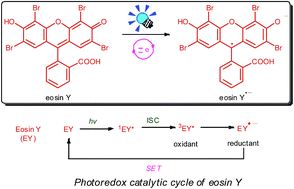
RSC Adv., 2017,7, 31377-31392
https://doi.org/10.1039/C7RA05444K
Surface and interface design in cocatalysts for photocatalytic water splitting and CO2 reduction
This review outlines the recent progress on designing the surface and interface of cocatalysts to create highly efficient photocatalysts for water splitting and CO2 reduction.
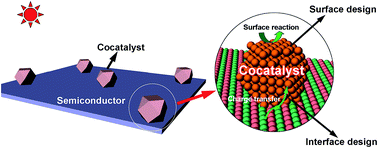
RSC Adv., 2016,6, 57446-57463
https://doi.org/10.1039/C6RA10539D
Principles and mechanisms of photocatalytic dye degradation on TiO2 based photocatalysts: a comparative overview
Pictorial representation of all possible dye degradation reaction in UV light initiated indirect dye degradation mechanism. This mechanism is practically more important over visible light initiated direct mechanism.
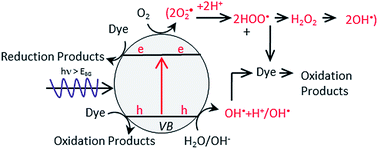
RSC Adv., 2014,4, 37003-37026
https://doi.org/10.1039/C4RA06658H
UV-visible light-induced photochemical synthesis of benzimidazoles by coomassie brilliant blue coated on W–ZnO@NH2 nanoparticles
A new photochemical route is disclosed in the preparation of a wide range of benzimidazoles in air under the illumination of an HP mercury lamp in the absence of any oxidizing species catalyzed by heterogenized W–ZnO@NH2–CBB.
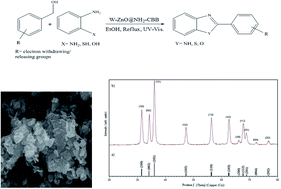
RSC Adv., 2021,11, 16359-16375
https://doi.org/10.1039/D0RA10843J
Dendritic fibrous nanosilica-supported dendritic IL/Ru(II) as photocatalysts for the dicarbofunctionalization of styrenes with carbon dioxide and amines
The effectual utilization of heterogeneous catalysts from nano sources through chemical moderation for the α-aminomethylcarboxylation of alkenes with carbon dioxide and amines is an attractive area to study.

RSC Adv., 2021,11, 9933-9941
https://doi.org/10.1039/D0RA10729H
Amorphous Co3S4 nanoparticle-modified tubular g-C3N4 forms step-scheme heterojunctions for photocatalytic hydrogen production
An effective method to reduce the recombination rate of photogenerated electron–hole pairs was developed by the construction of heterojunctions with rationally designed photocatalysts having a matched band structure.

Catal. Sci. Technol., 2021,11, 943-955
https://doi.org/10.1039/D0CY02009E
Photocatalytic and bactericidal properties and molecular docking analysis of TiO2 nanoparticles conjugated with Zr for environmental remediation
Despite implementing several methodologies including a combination of physical, chemical and biological techniques, aquatic and microbial pollution remains a challenge to this day.

RSC Adv., 2020,10, 30007-30024
https://doi.org/10.1039/D0RA05862A
Synergy effect between photocatalysis and heterogeneous photo-Fenton catalysis on Ti-doped LaFeO3 perovskite for high efficiency light-assisted water treatment
Synergy effect between photocatalysis and H2O2-mediated heterogeneous photo-Fenton catalysis on highly robust Ti-substituted La1−xTixFeO3 perovskites led to high performances under UV-A light in water treatment.
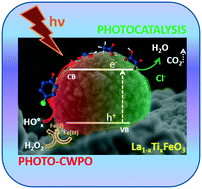
Catal. Sci. Technol., 2020,10, 1299-1310
https://doi.org/10.1039/C9CY02269D
Bilateral photocatalytic mechanism of dye degradation by a designed ferrocene-functionalized cluster under natural sunlight
Extensive composition engineering research has been conducted on bandgap tunability, but the combination of two mechanisms for better photon harvesting over a wide range has rarely happened; this is of great importance for improving photocatalytic efficiency with sunlight.
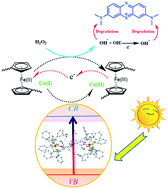
Catal. Sci. Technol., 2020,10, 757-767
https://doi.org/10.1039/C9CY02003A
Engineering a CsPbBr3-based nanocomposite for efficient photocatalytic CO2 reduction: improved charge separation concomitant with increased activity sites
We have constructed a cost-effective CsPbBr3@TiO-CN composite for photocatalytic CO2 reduction with water as the electron source.
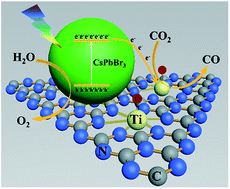
RSC Adv., 2019,9, 34342-34348
https://doi.org/10.1039/C9RA07236E
Accelerated charge transfer via a nickel tungstate modulated cadmium sulfide p–n heterojunction for photocatalytic hydrogen evolution
Improving the efficiency of charge separation is an important aspect in photocatalysis.
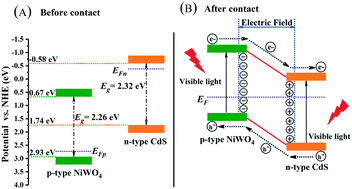
Catal. Sci. Technol., 2019,9, 1944-1960
https://doi.org/10.1039/C8CY02611D
Good practices for reporting the photocatalytic evaluation of a visible-light active semiconductor: Bi2O3, a case study
The use of dyes to evaluate visible-light photocatalysts requires a proper determination of the contribution from the competing processes: adsorption, sensitization, photobleaching and degradation.
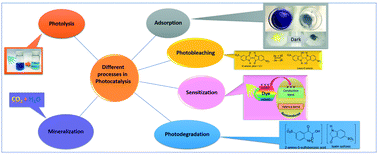
Catal. Sci. Technol., 2019,9, 1476-1496
https://doi.org/10.1039/C9CY00038K
Ultrathin CdS shell-sensitized hollow S-doped CeO2 spheres for efficient visible-light photocatalysis
By virtue of the systematic effects of S-doping on CeO2 and the ultrathin shell structure of CdS, the CeO2−xSx@CdS nanocomposite exhibits excellent photocatalytic activity under visible-light illumination for both H2 evolution (rate up to 1147.2 μmol g−1 h−1) and RhB degradation (efficiency reached 99.8%) as compared to CeO2, CeO2−xSx, and CdS.
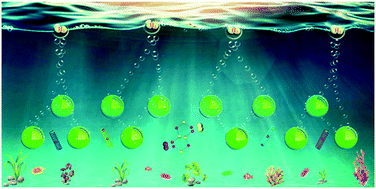
Catal. Sci. Technol., 2019,9, 1357-1364
https://doi.org/10.1039/C8CY02206B
Oxygen vacancy-rich MoO3−x nanobelts for photocatalytic N2 reduction to NH3 in pure water
Photocatalytic nitrogen fixation is a promising sustainable and green strategy for NH3 synthesis.
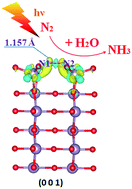
Catal. Sci. Technol., 2019,9, 803-810
https://doi.org/10.1039/C8CY02357C
Synthesis of a WO3 photocatalyst with high photocatalytic activity and stability using synergetic internal Fe3+ doping and superficial Pt loading for ethylene degradation under visible-light irradiation
Synthesis of a WO3 photocatalyst with high photocatalytic activity and stability using synergetic internal Fe3+ doping and superficial Pt loading for ethylene degradation under visible-light irradiation.
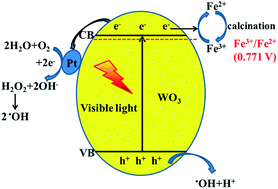
Catal. Sci. Technol., 2019,9, 652-658
https://doi.org/10.1039/C8CY02375A
Eosin Y-sensitized partially oxidized Ti3C2 MXene for photocatalytic hydrogen evolution
Ti3C2, though one of the most extensively studied 2D MXenes, is rarely reported in dye-sensitized photocatalysis.
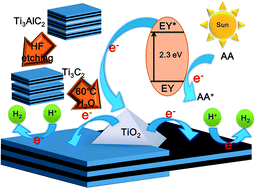
Catal. Sci. Technol., 2019,9, 310-315
https://doi.org/10.1039/C8CY02240B
Synthesis and photocatalytic activities of a CuO/TiO2 composite catalyst using aquatic plants with accumulated copper as a template
A CuO/TiO2 photocatalyst was synthesized by using a hydrolysis method. In the synthesis, the Eichhornia crassipes accumulated with copper was used and combined with titanium chloride precursor.
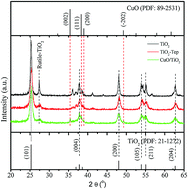
RSC Adv., 2019,9, 2018-2025
https://doi.org/10.1039/C8RA09645G
Ultrathin g-C3N4 nanosheets with an extended visible-light-responsive range for significant enhancement of photocatalysis
Ultrathin graphitic carbon nitride (UGCN) nanosheets with an extended region of visible light response and enhanced surface area were constructed for a significant enhancement in photocatalysis.
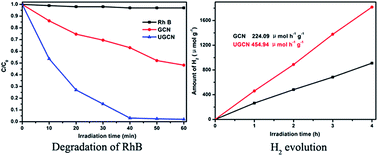
RSC Adv., 2017,7, 2333-2341
https://doi.org/10.1039/C6RA26172H
About this collection
We are very pleased to present our 10th Anniversary collection on Photocatalysis!Looking back over the last 10 years, we would like to showcase some of the very best articles that have been published in RSC Advances and Catalysis Science & Technology. Many of these papers have been cited hundreds of times, providing valuable advances for further research, and some continue to be among the journal’s most downloaded articles as of today.
We hope you enjoy our 10th Anniversary collection on Photocatalysis!